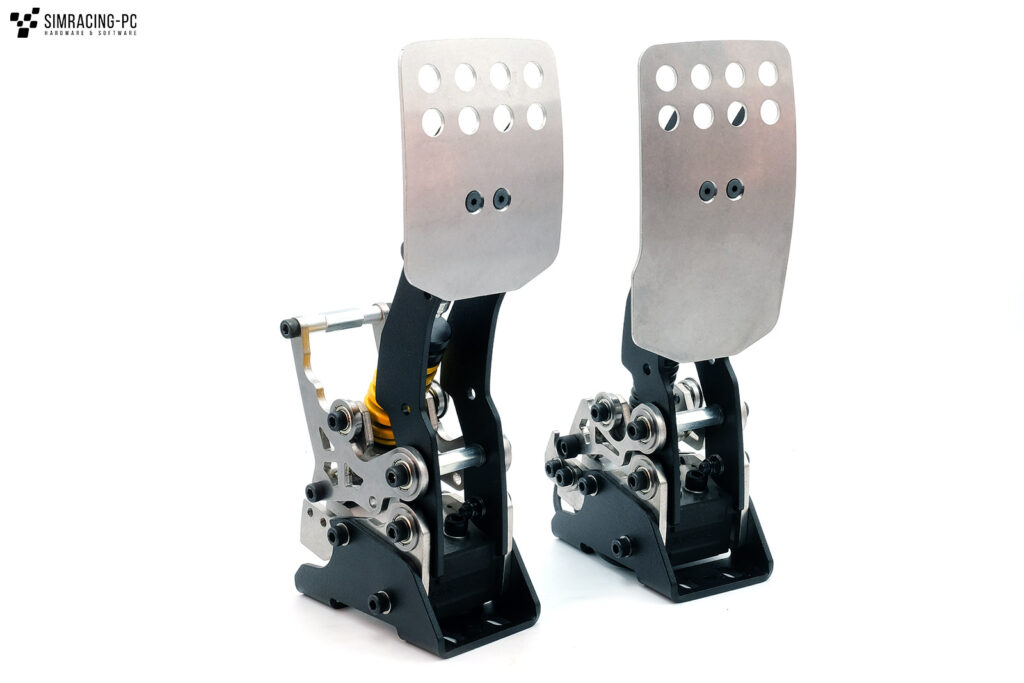Simgrade VX-PRO Pedals – Review
Reinventing the wheel is not always easy. Simracing pedals in particular are known in all shapes and sizes by now. Whether with load cell or hydraulic, the differences are becoming smaller and smaller. Where do the VX-PRO pedals from Simgrade rank in this highly competitive market?
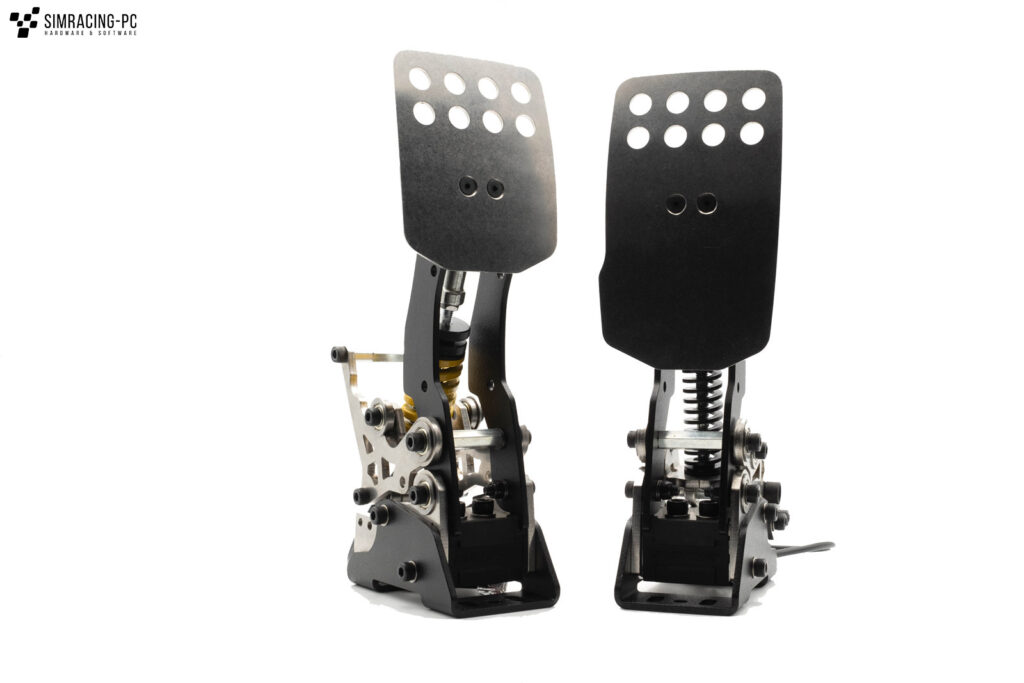
Ordering and shipping
The pedals can currently be purchased directly from the Finnish manufacturer and are currently available there from just under 500€ for throttle and brake. In addition, there are shipping costs of approx. 25€ within the EU.
The pedals presented here were pre-ordered during the market launch. Unfortunately, it cannot go unmentioned at this point that the promised delivery times were clearly not met. For several months, communication on the part of the manufacturer was reduced to a minimum and information about delays had to be gathered from various social media channels. Unfortunately, the poor communication continued even after the pedals were shipped. Despite repeated requests, no invoice could be provided by the time of the review.
Even though the number of pre-orders was probably much higher than expected, one can only hope that the manufacturer can significantly improve this area of the customer experience in the future.
- Throttle and brake: 474.81€
- Throttle, brake and clutch: 650.93€
- Clutch: 190.98€
- Pedal Base Plate: 95.01€
- Tilting heel support: 75.81€
- Side support: 27.83€
Scope of delivery
The pedals are supplied with mounting material including T-nuts and two spacers for the 2-stage brake. A USB-C cable is not included, the instructions can be downloaded online.
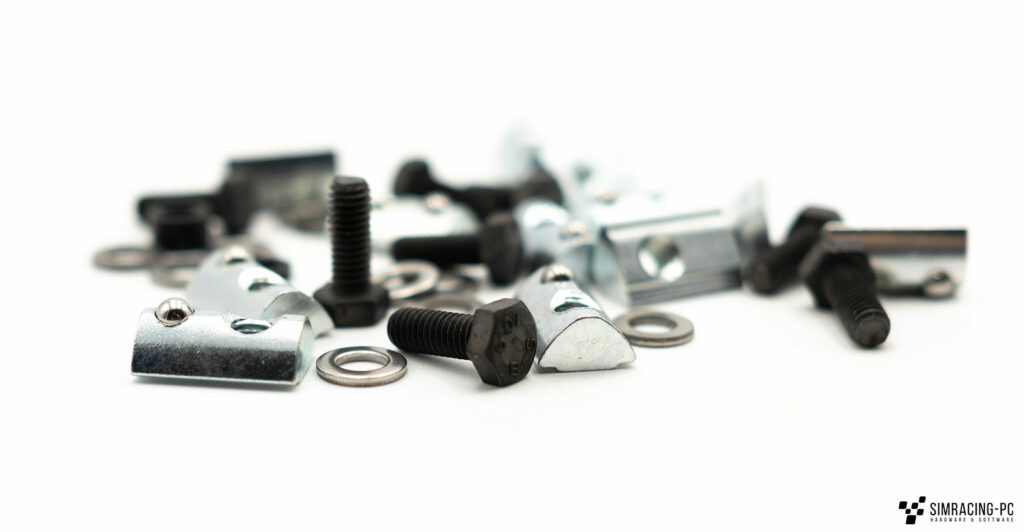
- Pedals
- Controller box
- T-slot nuts
- Hexagon head screws
- Washers
- Spacer
Compatibility
The pedals are intended for use on a PC, but according to Simgrade, they can also be used on a console via the additionally available Drive Hub.
Mouting
The pedals are equipped with two slotted holes at the front and two at the back. However, due to the very compact design of the pedals, these are very short, so that not all pedal plates are compatible out of the box. The two holes at the front are freely accessible, so that normal socket head cap screws can be used here without any problems. However, since the slotted holes on the back of the pedals are covered by the respective Laodcell, this is not possible there. Simgrade (probably for this reason) includes inconvenient black hexagonal screws to compensate for this restriction. The supplied T-nuts are very useful to be able to mount the pedals on aluminium profiles.
Afterwards, the pedals only need to be connected to the controller box and the latter to the PC with a USB-C cable. However, the latter is not included in the scope of delivery.
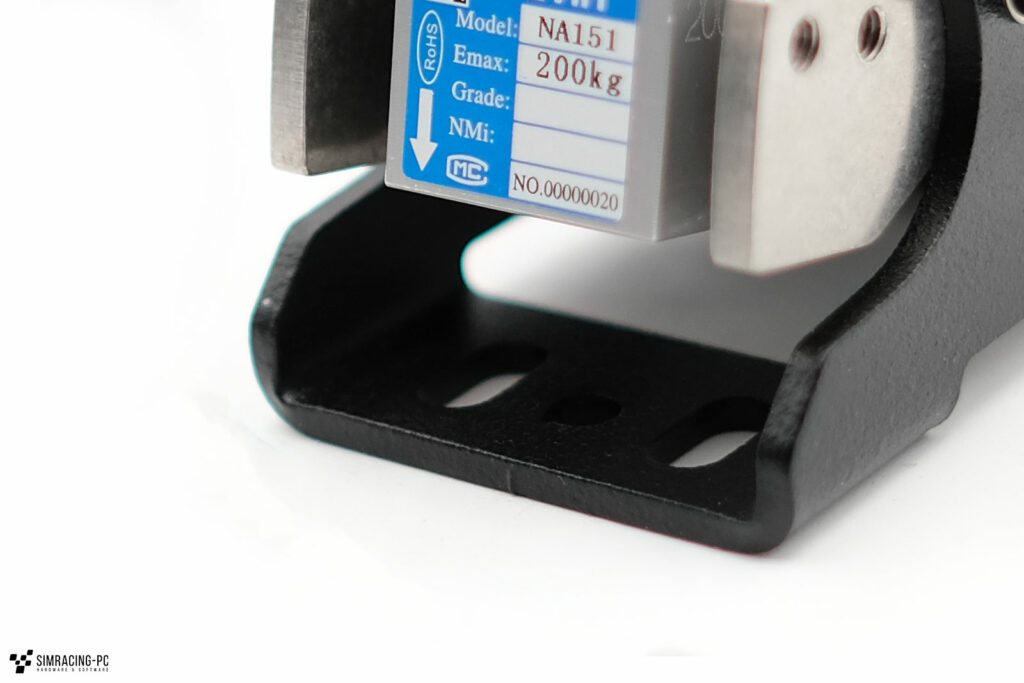
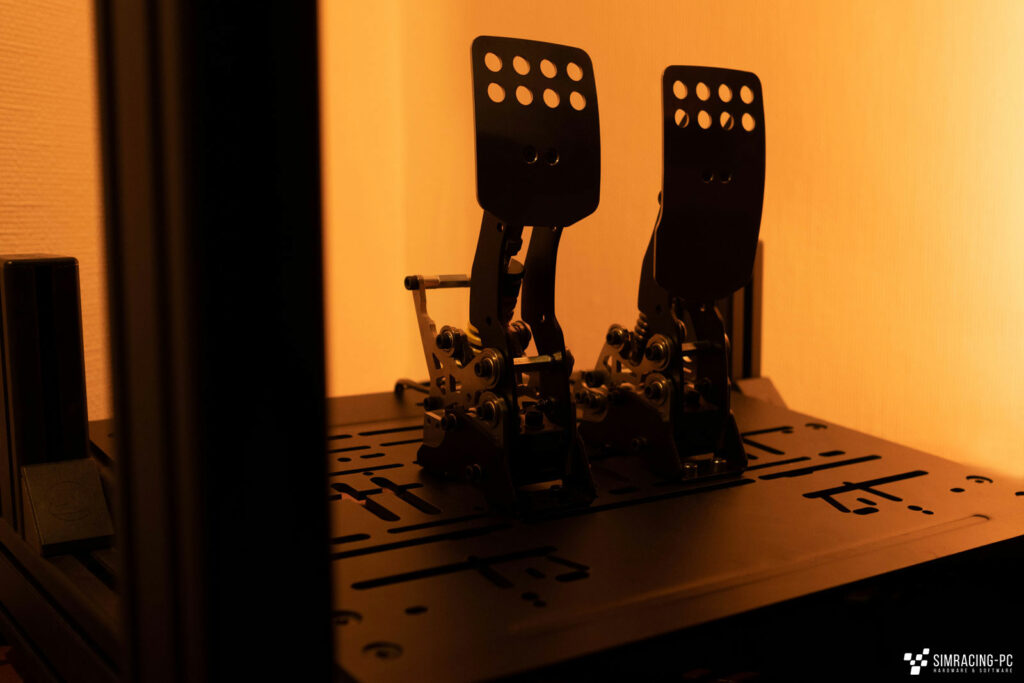
Pedals
The pedals all have the same basic construction and thus share the black anodised pedal arm and the lower mounting. Apart from the front cover, all components are made of metal and according to Simgrade, the pedals are maintenance-free:
Maintenance free design (load cells, sealed bearings): dust has no effect on the performance
Simgrade.fi
The two pedals can be mounted in two different positions. As delivered, they are almost vertical, but can be tilted backwards by 8.5° by a short modification (preferably before installation).
The springs of the pedals are standard (Compatible with ISO 10243 Die Springs), so they can easily be exchanged for alternatives if necessary.
Overall, the pedals are of very high quality and make a very durable impression, which of course can only be confirmed in the coming months and years.
Brake Pedal
The heart of the pedalset is of course the brake, which is operated with a 200 kilo loadcell, which according to Simgrade allows a brake pressure of the equivalent of up to 90 kilos (measured in the middle of the pedal plate). The system differs from other manufacturers in that the force is transmitted to the loadcell via ball bearings. These roll over the loadcell with increasing pressure and thus provide the corresponding brake deflection.
To adjust the brake, you can engage the spring holder in different positions. While the lowest position results in a very soft brake pedal, the pedal becomes correspondingly harder with each subsequent step. (In this test, almost exclusively the second highest level was used in conjunction with approx. 70-80 kg brake pressure).
To change the spring, you only have to loosen the preload a little and can then simply hook it into one of the other recesses by hand. By adjusting the preload, you also change the characteristics of the brake, especially in the initial part of the braking process.
All in all, you have quite a wide range of adjustment possibilities with relatively few simple steps. However, it would be nice if the instructions were more specific about the effects of the individual settings. Pedal curves for the braking distance as a function of pressure at different settings, such as those provided by Heusinkveld, would help to simplify the settings.
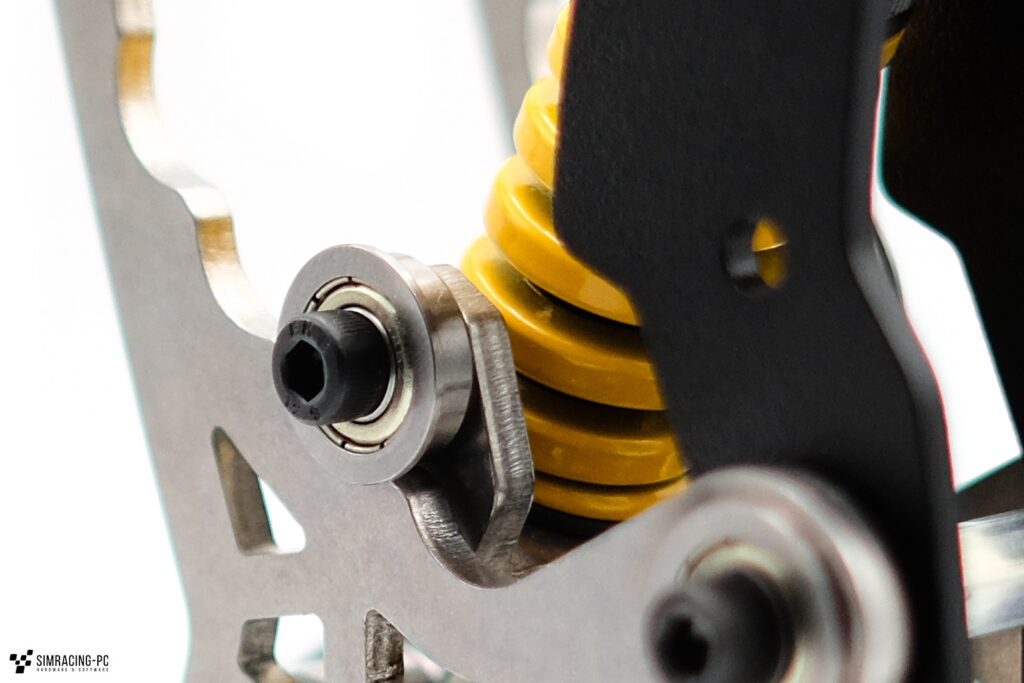
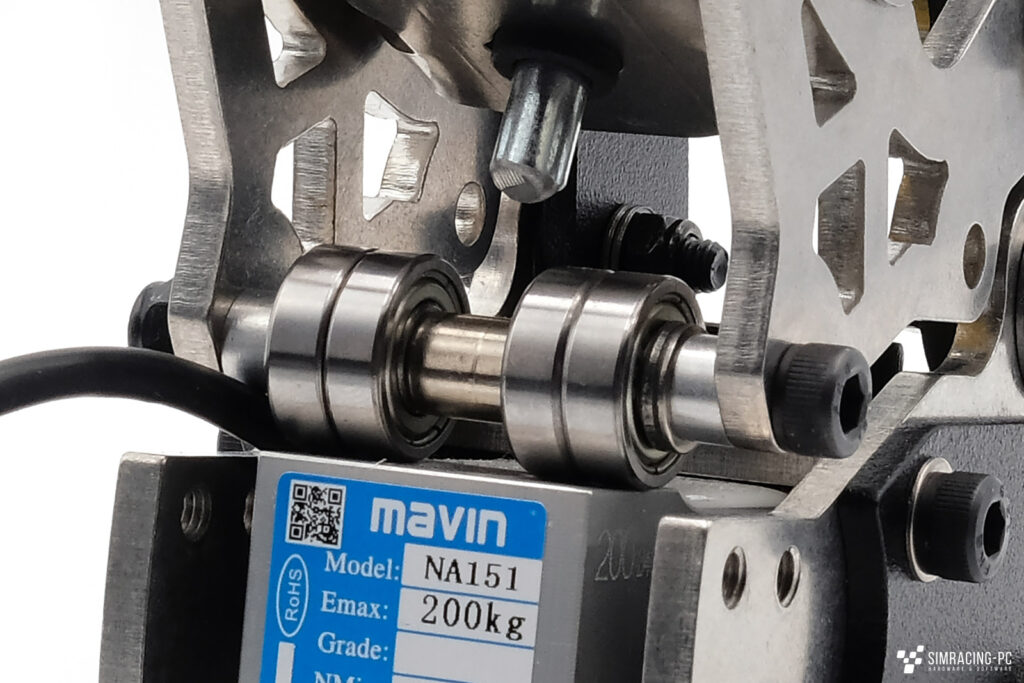
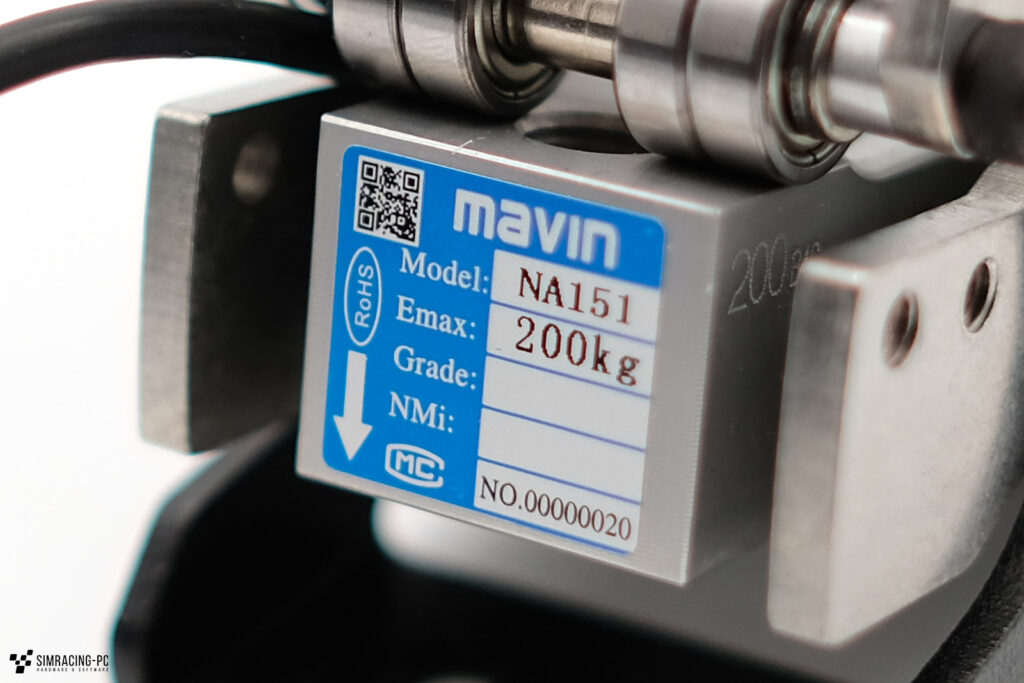
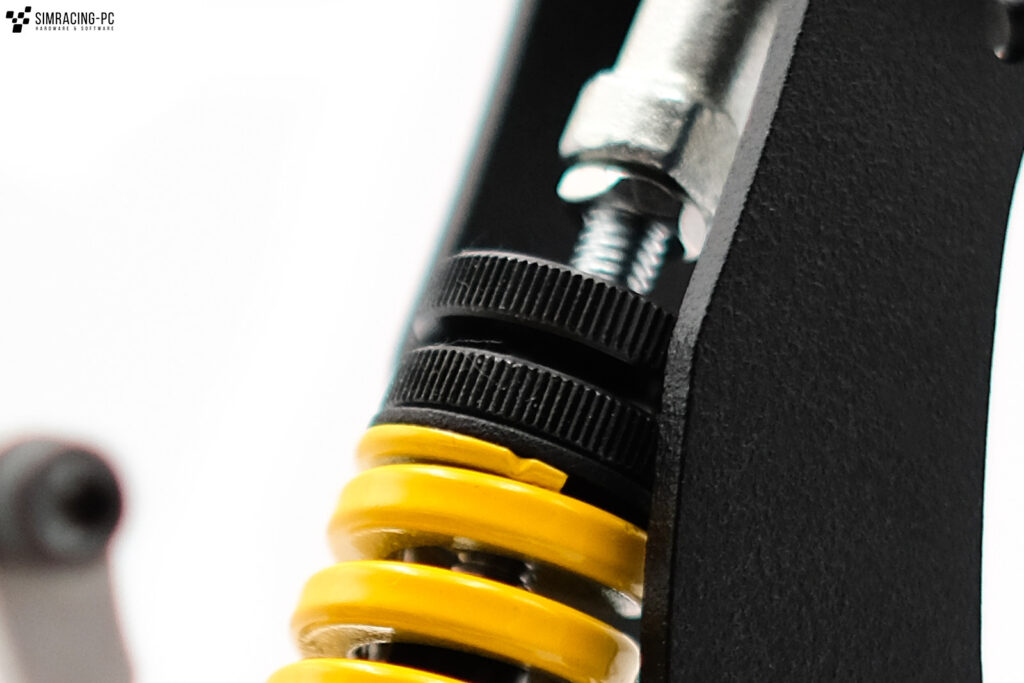
2-Stage-System
The pedals have a 2-stage system, which is realised by spacers inside the spring. When the brake pressure reaches a corresponding value, the spring has been compressed accordingly and the spacers prevent further compression. From this point on, the remaining pressure is transferred to the loadcell with almost no additional pedal travel.
In order to change the engagement point of the second stage, Simgrade provides two additional spacers. By adding or removing them, the second stage can be moved in several steps.
In practice, this works very well, but it is done blindly, as Simgrade does not provide any recommended settings. Especially if you also change the other settings, you can easily get confused. Asetek, for example, uses different elastomers and thus fixed values for the positioning of the second stage.
A recommendation: First define a position for the locking and preload of the spring and then adjust the 2-stage system with the spacers. This way you only change one parameter at a time and can then use the raw values from the software to find the appropriate number of spacers.
Overall, the brake pedal was very convincing after a longer adjustment phase. Both without and with the 2-stage system, it could be very finely dosed and the braking points could be reliably hit after only a few laps of getting used to it.
Throttle
The throttle pedal works in a similar way to the brake. Here, too, the force is transmitted via ball bearings that roll on a loadcell. A 100 kg load cell is used here, which theoretically allows the throttle pedal to be set very hard.
There are a total of three different engagement points for the spring here, whereby the lowest one probably only makes sense for desk operation. For this review, the middle position was chosen with a little extra preload, which resulted in a very finely controllable throttle.
By using the Loadcell, the pedal curve (travel to deflection) is of course no longer linear, but this can be corrected or attenuated via the software. Even if the Loadcell does not bring any real advantage in practice, it at least ensures a maintenance-free pedal.
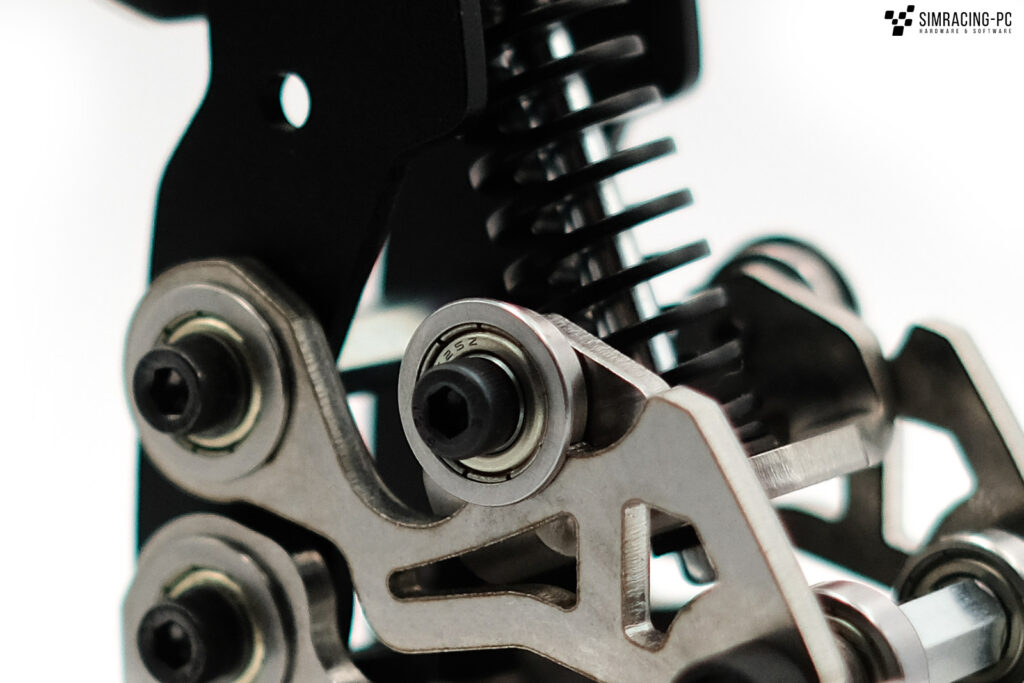
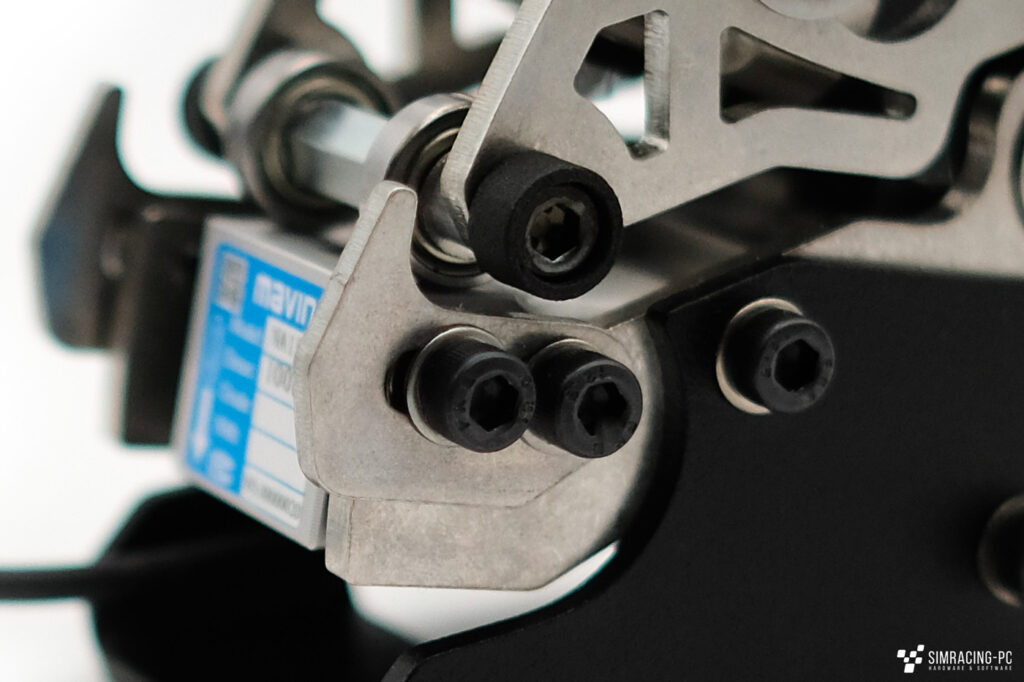
On the back of the pedals, the pedal travel can be adjusted with two screws on each side, whereby the maximum but quite short travel (about three centimetres) is unlikely to be adjusted by most users. If the travel is not sufficient, you can unhook the spring by reducing the preload, fold the pedal arm back and then remove the front cover. This gives you a little more travel again, but of course also changes the angle of the pedal accordingly.
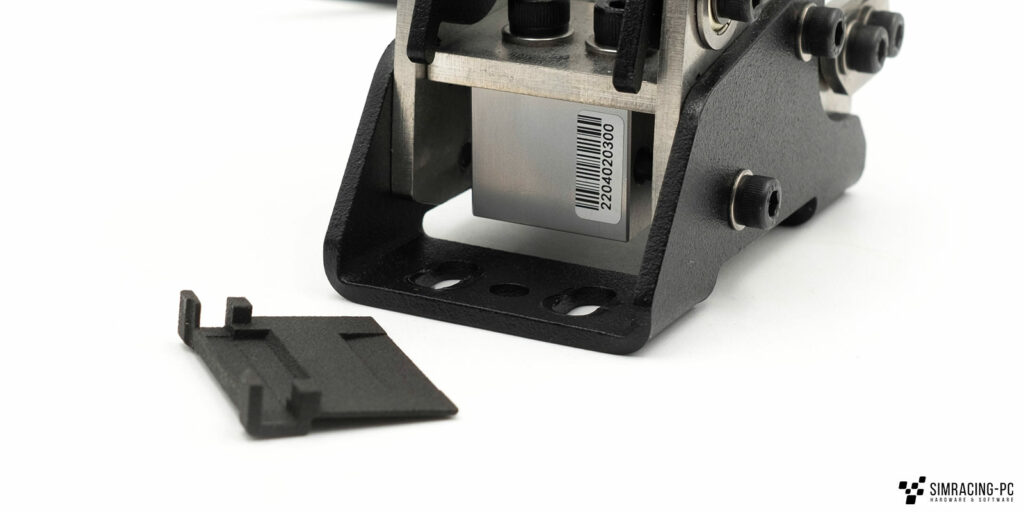
Pedal Plates
The pedal plates are made of aluminium and are slightly curved with eight holes integrated on the top. The height of the plates can be adjusted on the back. To do this, loosen the two screws, move the plates and then tighten the screws again. The plates offer relatively little grip, but this was not a problem during the review (driven with karting shoes).
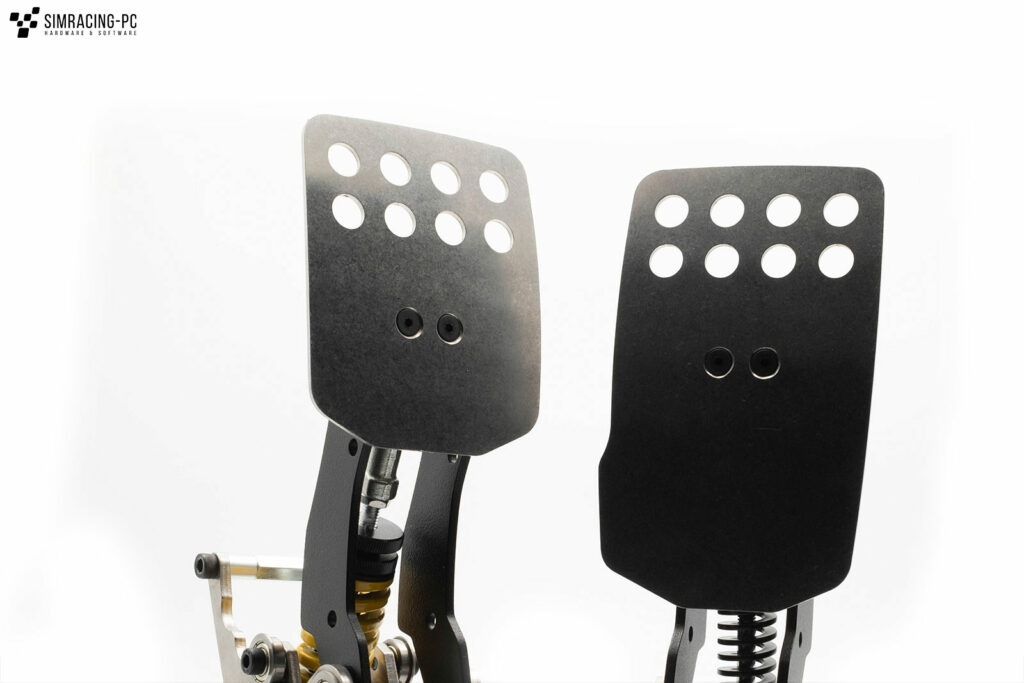
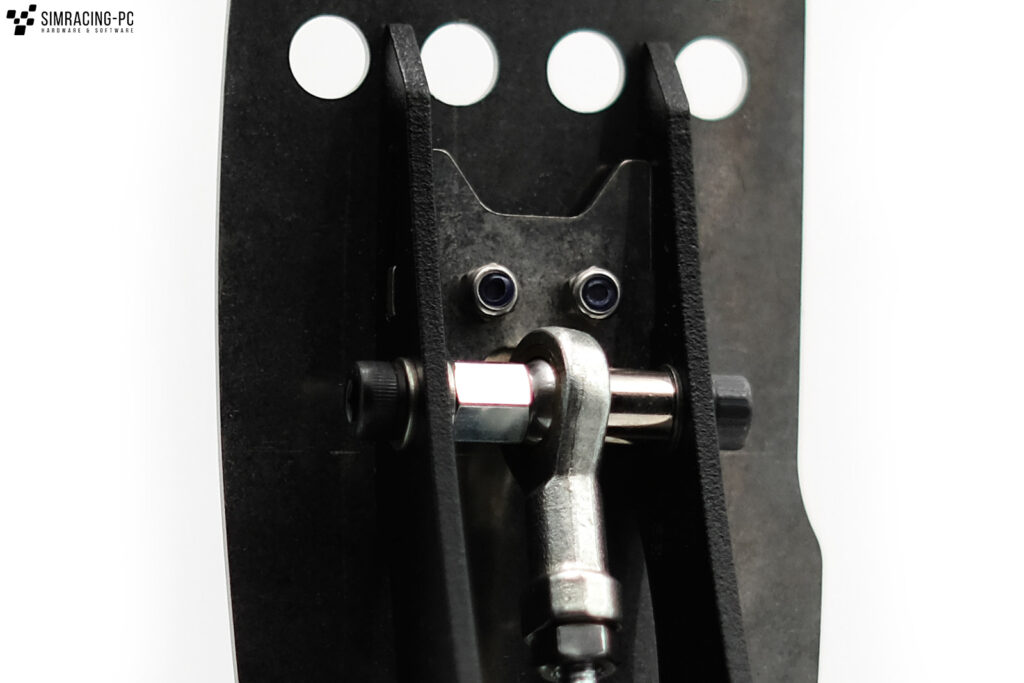
Controller-Box
The pedals must be connected to the supplied controller box. This is made entirely of plastic and contains a circuit board with connections for the three pedals as well as a USB-C connection for connecting to a PC.
Due to its very low weight, the box can be positioned almost anywhere. To do this, you can either use the two screws provided or simply glue the small box to the underside of the pedalboard, for example.
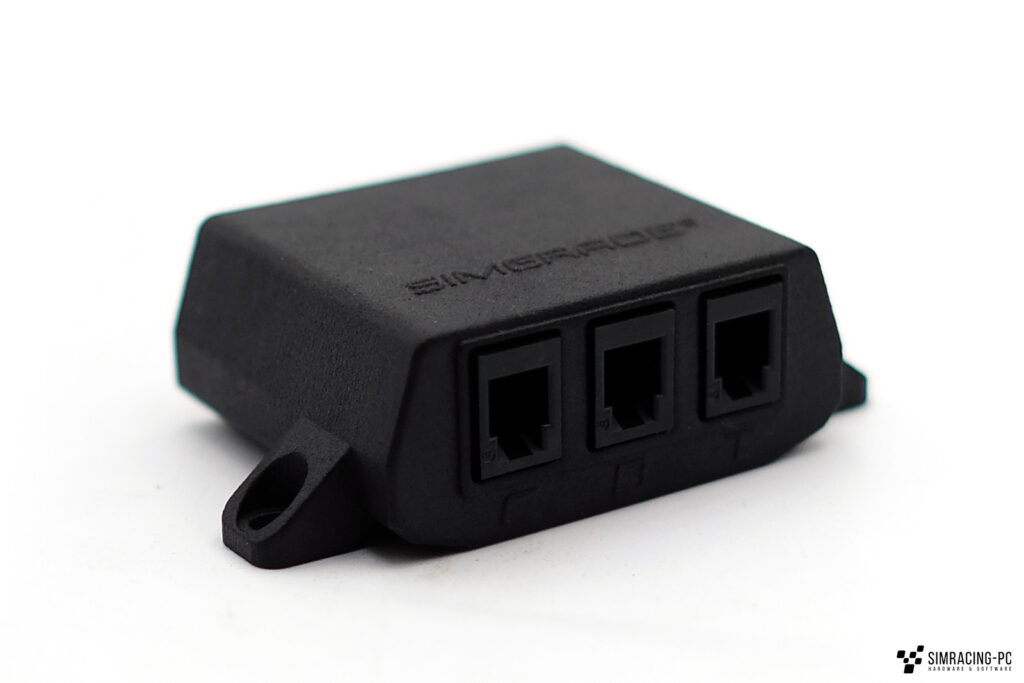
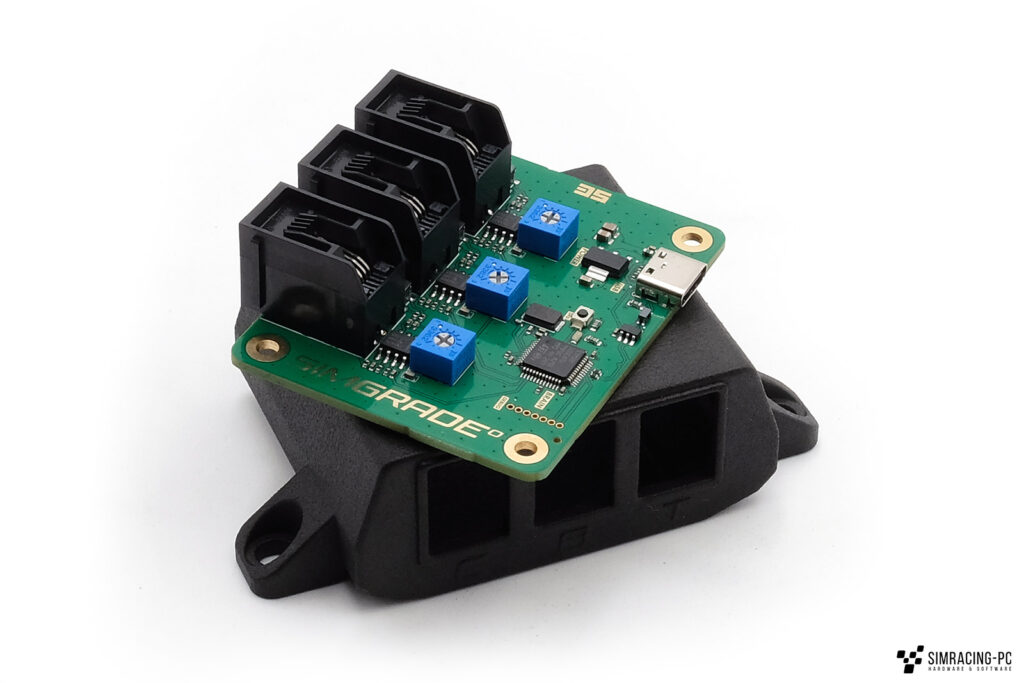
Software
For the calibration of the pedals Simgrade offers an independent and at the same time very easy-to-use software. Here, the RAW values of brake and throttle pedal can be defined and adapted to one’s own needs. In addition, profiles can be saved and loaded as a file and pedal curves can be defined for all pedals.
By using a loadcell for the throttle pedal, it is advisable to adjust the end point according to when the physical end stop is reached. Additionally, a pedal curve can be defined to compensate for the non-linearity of the design.
Important: For the brake, RAW values of 17,000 must not be exceeded
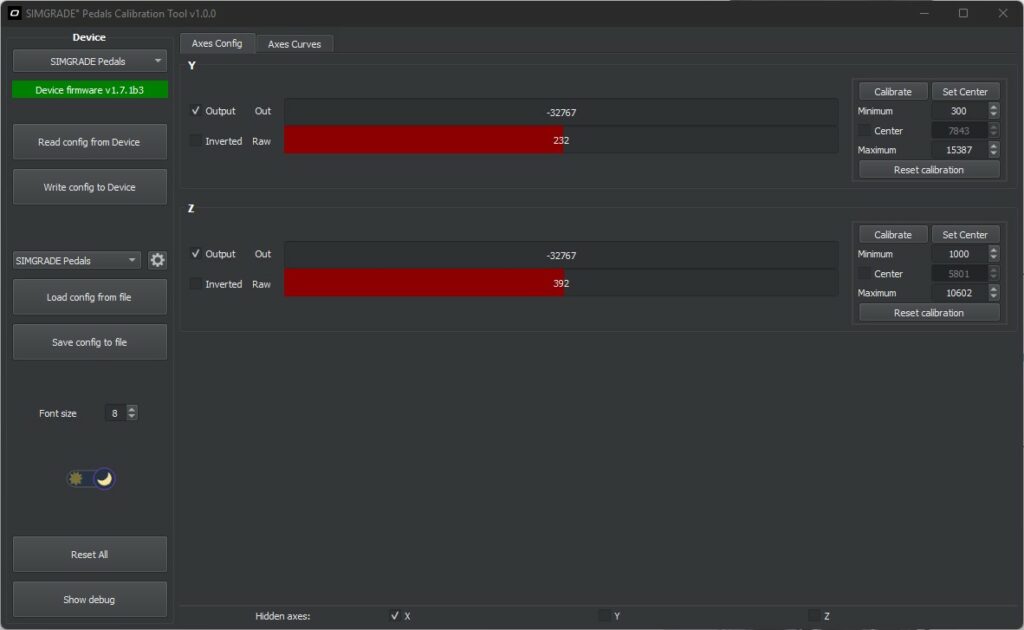
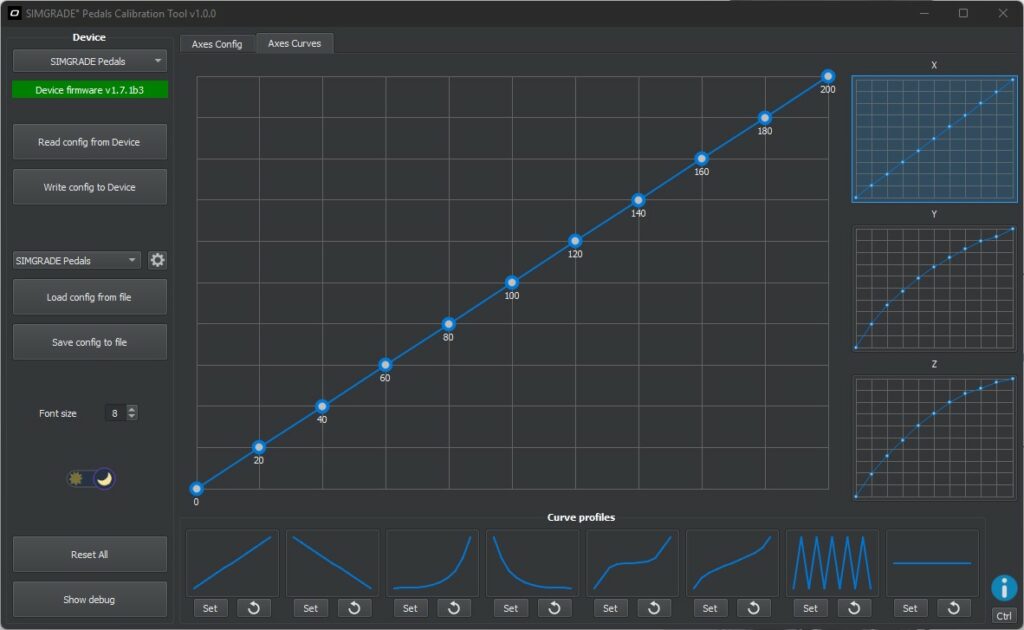
Accessories
Simgrade offers an optional baseplate (which makes mounting much easier), side supports and a heel rest, as well as a tilting heel support that can be mounted on the throttle pedal.
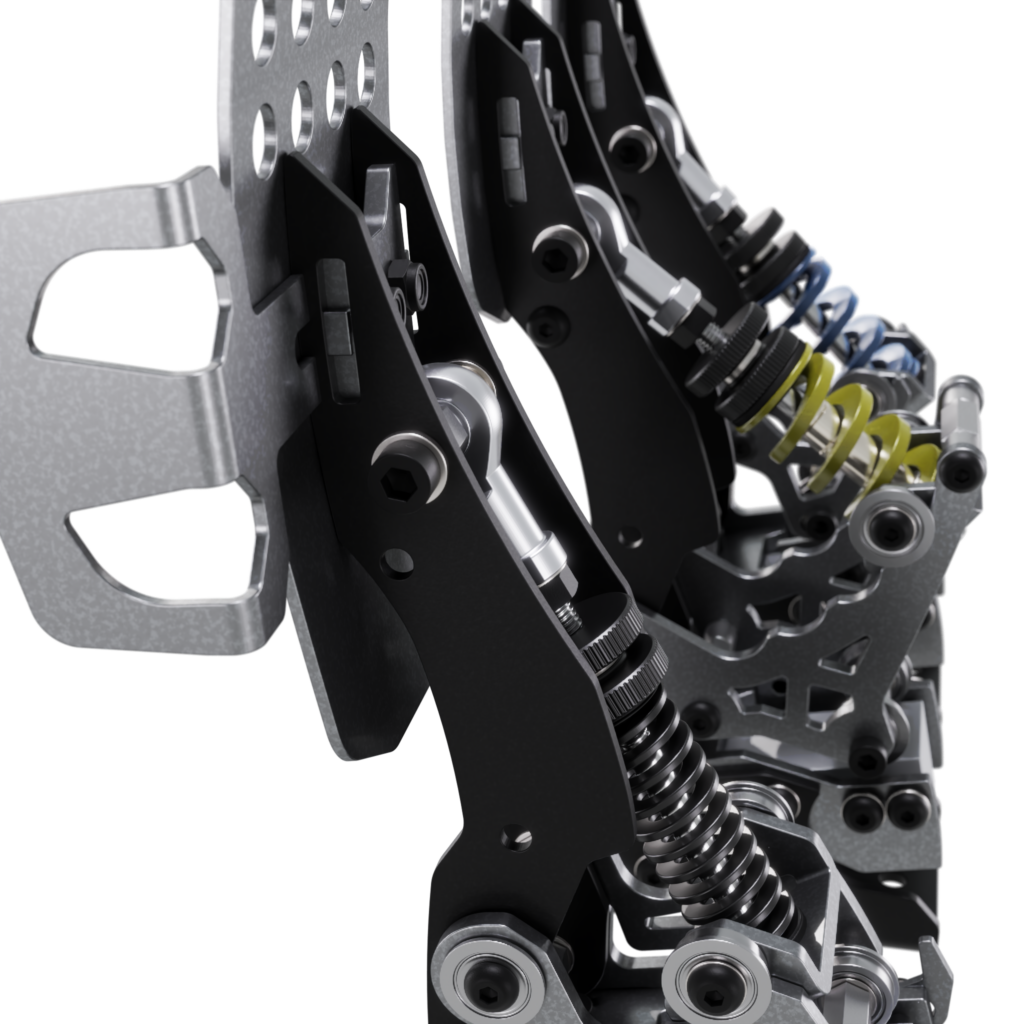
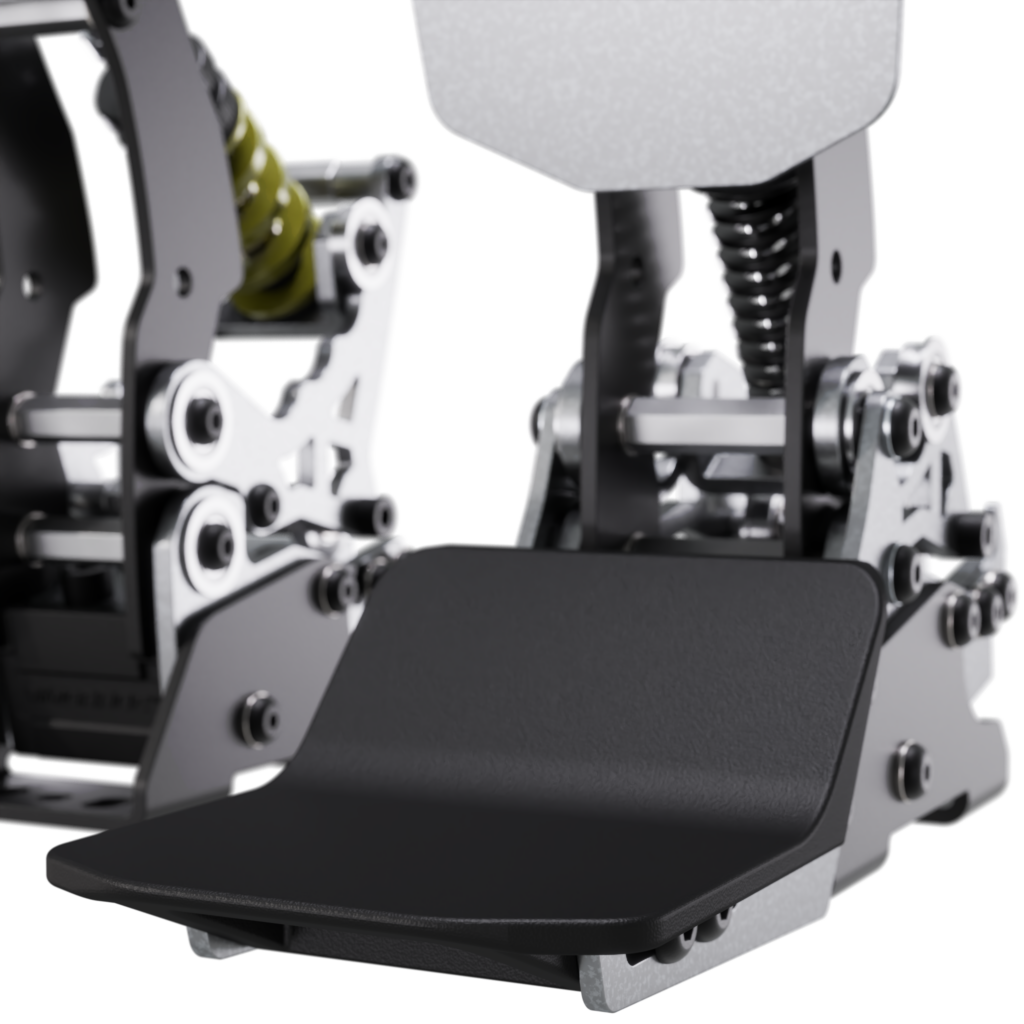
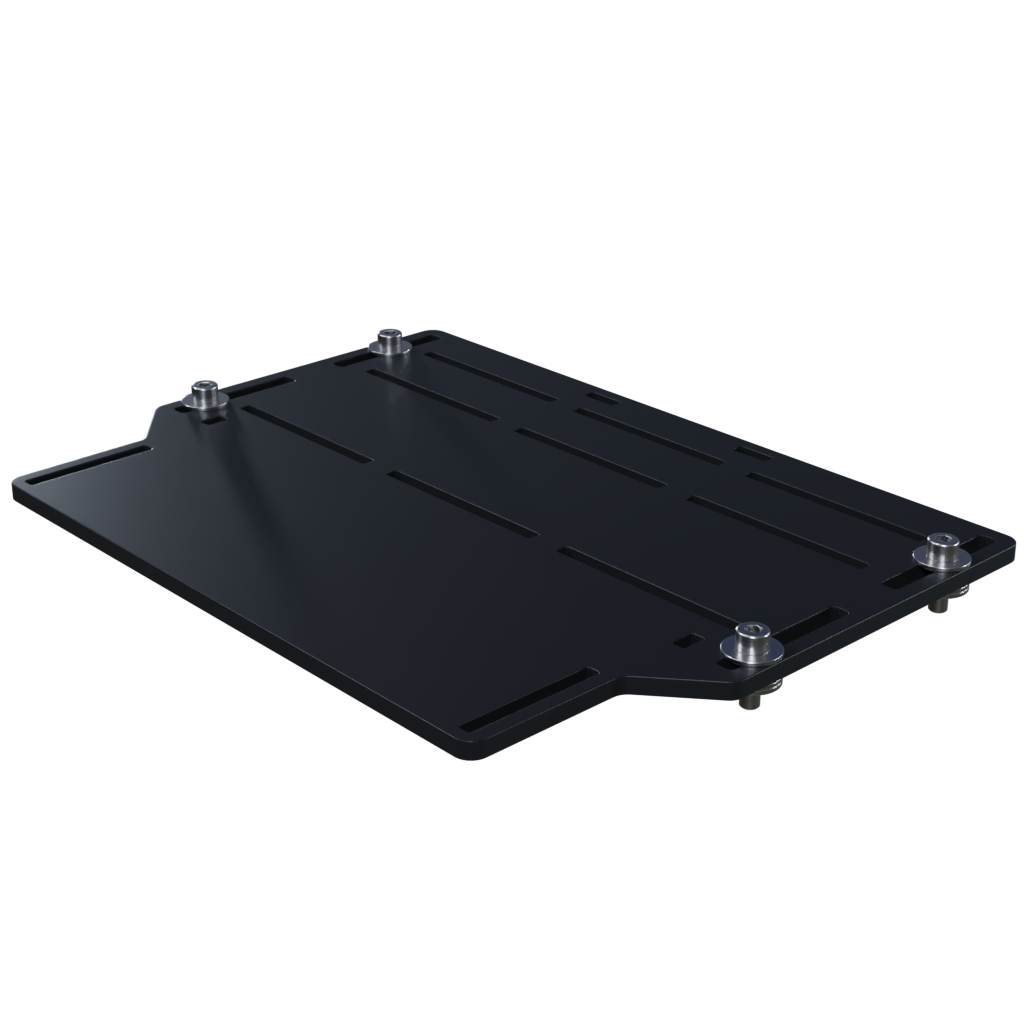
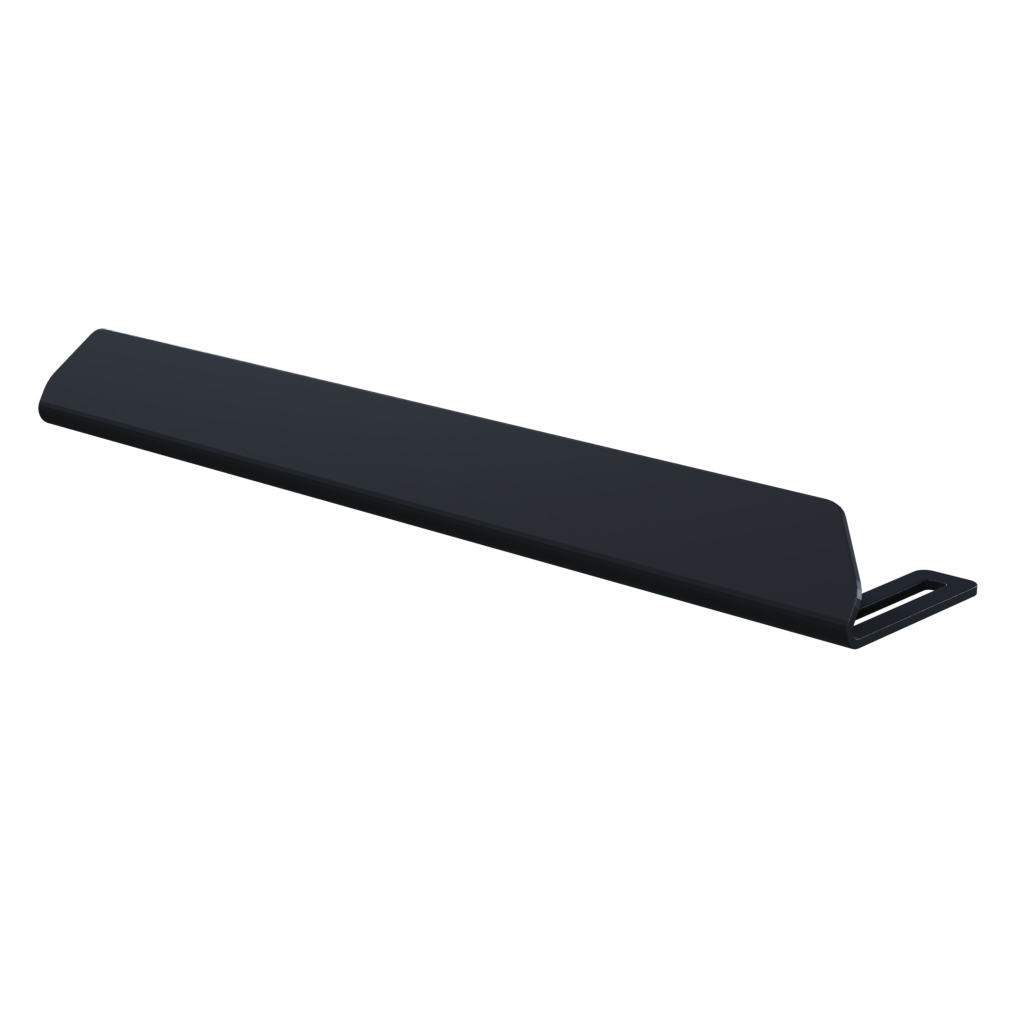
Modding
Simracing and DIY go hand in hand. Reason enough to present another small DIY project here. The Heel Rest is designed for a 2-pedal setup.
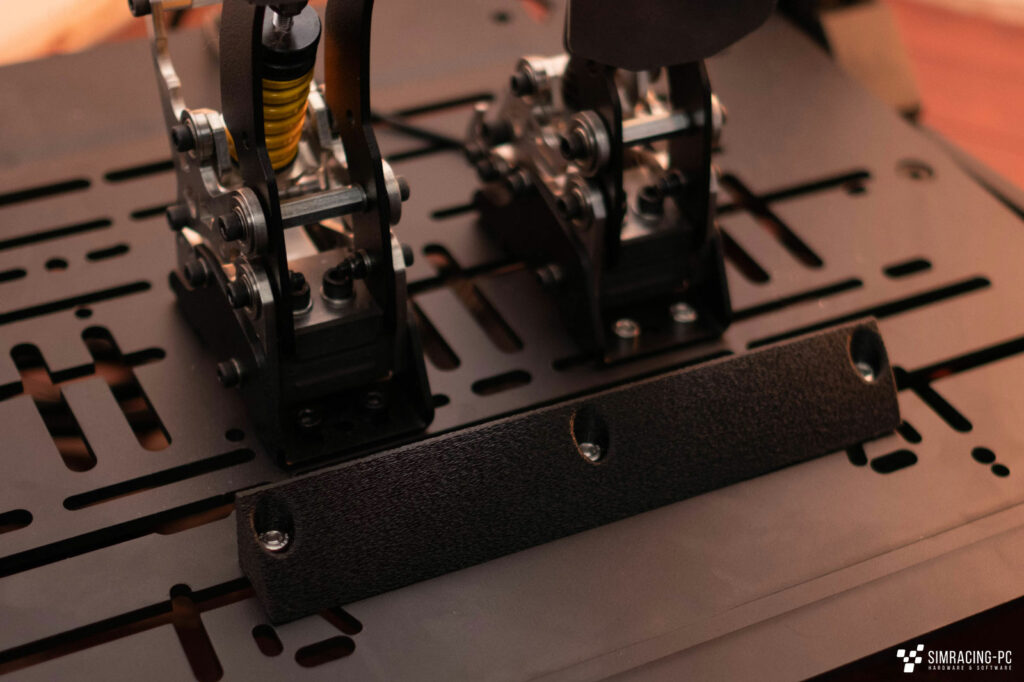

Conclusion
The Simgrade VX-PRO pedals are a very well-designed pedal set, which is characterised by a very compact construction and high-quality materials. The unique design makes the pedals stand out from the crowd of current Loadcell pedals and leads to a new kind of adjustment possibilities. The built-in 2-step system and the good and easy-to-use software also deserve positive mention.
Unfortunately, the good overall impression is marred by the sometimes very poor communication on the part of the manufacturer. It would also be desirable to include a detailed instruction manual, as reference settings would be very important, especially with such a unique design.
All in all, at a price of about 500 € as a set of 2, the pedals are nevertheless a clear recommendation to buy, if you can overlook the points of criticism mentioned.
Pros
- Compact Design
- Good braking feel
- 2-Stage-System
- Software
- Materials
- Price/performance ratio
- Accessories available
Cons
- Communication with manufacturer
- Mounting
- (Instructions)
